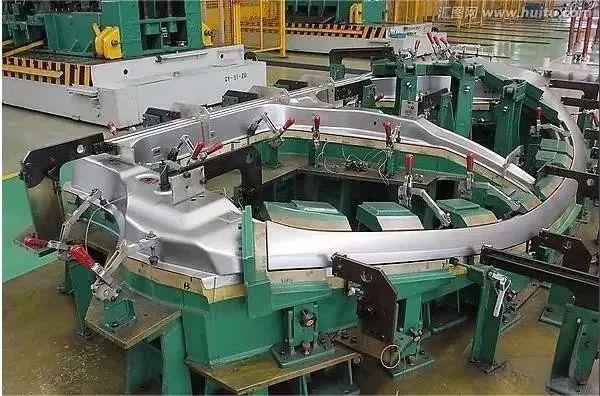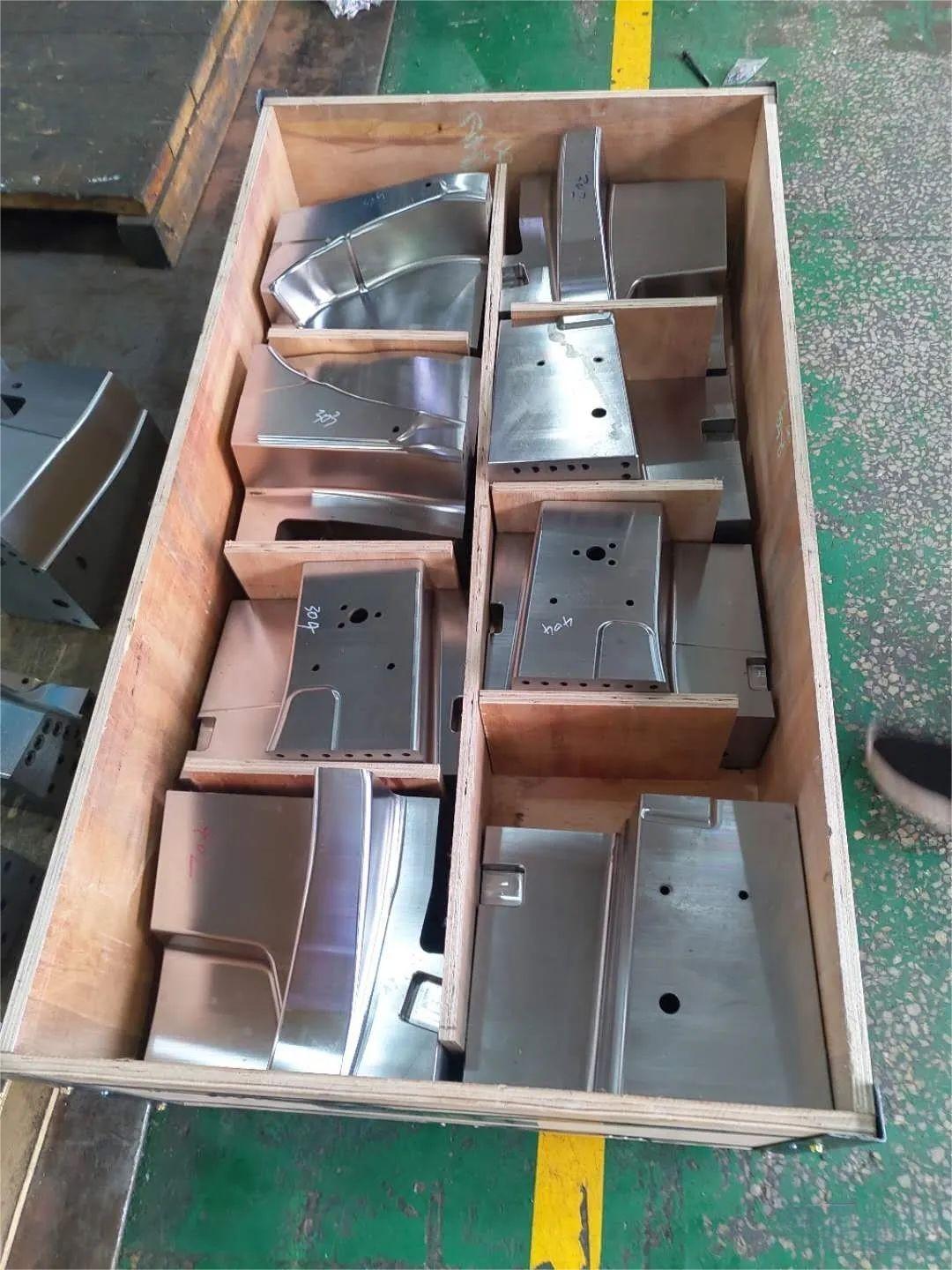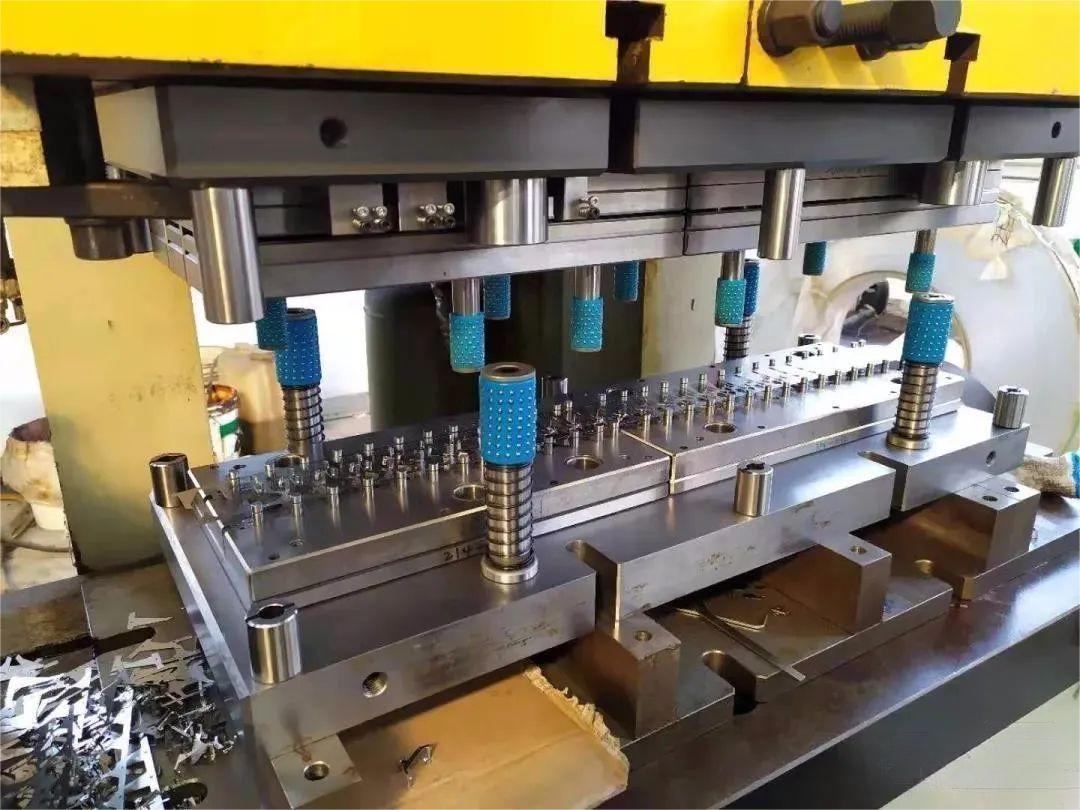technological innovation
Factors affecting the life of trimming and punching molds
Trimming and punching molds are easily damaged because the force is relatively concentrated, and their lifespan is shorter than that of forming molds. In order to improve the quality of stamping parts, reduce costs, and extend the life of stamping dies, the molds must be used correctly and reasonably maintained. The "three confirmations" system for stamping molds must be strictly implemented (confirmation before use, confirmation during use, and confirmation after use), and stamping must be done well. Mold maintenance work.

The damage rate of stamping dies for automobile panel parts is high during the production process. However, due to different stamping process contents and different working conditions of the molds, there are many factors that affect the life of the stamping dies. In particular, trimming and punching molds are more likely to be damaged because the force is relatively concentrated, and their lifespan is shorter than that of forming molds.
The following is a combination of stamping sheet materials, trimming mold structures, mold insert materials, mold insert thermal processing technology, mold surface quality, mold working surface surface treatment, surface control after trimming edge wire cutting, and stamping machine tools Let’s talk about the failure causes of trimming and punching molds and corresponding improvement measures from nine aspects of mold use and reasonable maintenance.
1 The following aspects should be paid attention to when setting up and applying the stamping process:
A When setting the stamping process, try to avoid setting the vertical cutting edge. The working principle of the vertical cutting edge is similar to the punching process in which the thickness of the parallel sheet metal surface is gradually thickened. Therefore, the vertical cutting part should be Convert to side lift punching, or convert to flat cutting edge for punching processing.
B The blanking die is also a type of trimming and punching die. When setting the stamping process, the blanking die should pay attention to the overlapping distance between the pieces of sheet material. The overlapping distance should be greater than twice the thickness of the sheet material. If an unreasonable overlapping distance is selected, it will have a great impact on the edge of the blanking die, causing the edge to collapse and increase wear. Therefore, it is necessary to consider improving the sheet metal utilization rate of a single car and at the same time choose a reasonable overlapping distance to increase the service life of the mold.
C The quality of stamped sheet material is a key factor in stamping production. During the production process, mold punching is often caused by undesirable factors such as sheet metal thickness tolerances, sheet material performance fluctuations, sheet material surface quality problems (pits, rust), etc. The cutting edge wear of the head and insert is increased, and the edge is prone to chipping and other adverse consequences. Therefore, we should try our best to avoid the risks caused by these factors in production. We should do the following:
① When selecting sheet materials, try to choose sheet materials with good performance to avoid fluctuations in sheet material performance, including choosing sheet materials produced by large steel plants;
② A strict incoming inspection system is the guarantee of production. Before stamping production, the sheet material grade, plate thickness, manufacturer, physical properties, chemical properties, and surface quality should be strictly inspected. Only sheet metal that has passed the inspection can be stamped.
③Appropriate lubricating oil must be selected during the production process to protect the mold.
2. The structural design of trimming and punching molds should be based on the punching force of the mold to select the insert material and design the punching structure, and fully consider the impact of the punching gap on the mold in the design.
(1) When designing the structure of trimming and punching dies, first consider the impact of plate thickness. If the sheet thickness exceeds 1.2 mm, the die insert material should be an integral forged insert or a sheet insert. The material is Crl2MoV or better material, mold inserts with sheet thickness less than 1.2 mm are generally made of cast 7CrSiMnMoV and commonly known as air-cooled steel.
(2) Choose a reasonable punching gap when designing the mold. Generally, according to the on-site adjustment experience of the cover mold, the reasonable punching gap is 3% to 6% of the material plate thickness. Different punching gap adjustments are made according to the shape of the convex and concave molds, edge curvature, and profile drop. Reasonable blanking clearance has a great impact on the quality of stamping parts, which will cause burrs and deformation of the parts, and also seriously affect the use of the mold.

3. Mold insert material selection, just like the material selection principle in mold design mentioned earlier, different insert materials are selected according to different sheet metal thicknesses. Commonly used domestic materials for automotive panel repair and punching mold inserts include Crl2MoV, Crl2Mo1V1, cast 7CrSiMnMoV, imported similar performance materials include SKD11, SKD12, HMD5, etc. The impact on mold life is specifically reflected in the material's processing performance, which must be easy to process. The processing mentioned here is not only mechanical processing but also includes the manual processing performance of the fitter. The material should also have a high hardness after quenching, such as casting 7CrSiMnMoV It is usually required that the quenching hardness reaches HRC50~HRC55, and the quenching hardness of Crl2MoV and SKD11 reaches HRC50~HRC55. If the hardness of the mold insert is unqualified, it will directly affect the service life of the mold.
4. The heat treatment method of the mold insert has a great impact on the service life of the mold. Usually when the thickness of the workpiece sheet is less than 1.2 mm, the heat treatment method is mainly quenching by flame quenching. This quenching method is very important for the quenching operation. The technical requirements for personnel are high, and there are many invisible technical components, which are not easy to quantitatively identify. If decarburization or insufficient hardness occurs during the quenching process, it cannot be compensated. Crl2MoV inserts usually adopt a vacuum quenching heat treatment process. The specific process is as follows:
a. Preheat in stages and keep it at 400 degrees for 2 hours, then raise the temperature to 650 degrees and keep it for 3.5 hours. After taking it out of the furnace, use boric acid to protect the surface of the workpiece and put it into the furnace to raise it to 850 degrees and keep it for 8 hours.
b. Quench and pre-cool to 760-780 degrees, add oil, cool for about 40 minutes, and raise the tail end of the oil level for 20 minutes.
c Tempering immediately after the oil is released, the temperature is 460 degrees, 9-11h bm oil cooling to 200 degrees air cooling. However, forged Crl2MoV inserts usually require pre-heat treatment after forging is completed, and isothermal annealing is usually used. For example, for Cr12MoV inserts, the cutting edge of trimming and punching dies often causes chipping during use due to uneven distribution of carbides, so upsetting and forging must be carried out. The final carbide segregation should be below level 2-3, and the forging After that, annealing needs to be carried out in time. The spheroidizing annealing process is: 850-860 insulation for 2-4 hours. Furnace cooling to 720-760 insulation for 3-5 hours. Furnace cooling to 500 degrees air cooling. The quenching and tempering of Cr12MoV inserts is the most important link in the heat treatment of forging mold inserts. If the temperature is too high during quenching and heating, it will not only cause the mold insert to be highly brittle, but also easily cause deformation and cracking during the cooling process and later working processes, seriously affecting the life of the mold. Cr12MoV inserts are tempered immediately after quenching. The timeliness of tempering is also a key link to ensure the service life of the mold during the later use of Cr12MoV inserts.
5 Mold surface quality The smoothness of the cutting edge surface of the mold insert has a very close relationship with the wear resistance, fracture resistance and anti-adhesion ability of the mold insert, and directly affects the service life of the mold. In particular, the surface roughness value has a great impact on the life of the mold. It will also affect the quality of the incision of the stamping parts and produce burrs, which directly affects the service life and accuracy of the stamping mold.
6. Surface strengthening treatment of trimming vertical cutting edges. Currently, in order to improve the service life of special parts such as vertical cutting edges of molds, mold surface treatment technology is becoming more and more widely used. Currently, it is used in many surface treatments in automobile panel molds. Technologies include chemical vapor deposition (CVD), physical vapor deposition (PVD), and carbide immersion plating (TD) on the insert in a salt bath. Among them, physical vapor deposition (PVD) is mainly used in thin plate molds. Its advantages are short processing time, low processing temperature and small thermal deformation of the insert, which can effectively reduce the mold maintenance cycle. However, the wear resistance and surface hardness are not as good as those in salt bath. Insert Dip Carbide Plating Method (TD). TD has the disadvantages of large deformation and long time. TD treatment is widely used in medium-thick sheet metal molds due to its high surface hardness (HV3200~3700).
7 Control of the deteriorated layer of wire cutting The cutting edge of stamping molds is mostly processed by wire cutting. Due to the thermal effect and electrolysis of wire cutting processing, a certain thickness of deteriorated layer is produced on the surface of the mold processing, resulting in a reduction in surface hardness and the occurrence of microcracks. As a result, the stamping mold processed by wire cutting processing is prone to early wear, which directly affects the die blanking clearance. The maintenance and cutting edge are easy to chip, shortening the service life of the mold. Therefore, a reasonable discharge gap should be selected during wire cutting processing to minimize the depth of the deteriorated layer.
8 Stamping equipment The accuracy and rigidity of stamping equipment (such as mechanical presses) have an extremely important impact on the life of stamping dies. The stamping equipment has high precision and good rigidity, and the life of the stamping die is greatly improved.

9 Correct use and reasonable maintenance of molds In order to protect normal production, improve the quality of stamping parts, reduce costs, and extend the life of stamping molds, molds must be used correctly and reasonably maintained, and the "three confirmations" system of stamping molds must be strictly implemented (confirmation before use, use process Confirmation during operation and confirmation after use), and do a good job in maintaining the stamping mold. In short, in the whole process of mold design, manufacturing, use and maintenance, the application of advanced manufacturing technology and comprehensive quality management are effective guarantees to improve the life of molds. We are committed to developing professional production and strengthening mold standardization work. In addition to parts standardization In addition, there are heat treatment standardization, design parameter standardization, equipment accuracy standardization, processing method standardization, etc., to continuously improve the level of mold design, manufacturing, use and maintenance, in order to increase the life of trimming and punching molds.
RELATED NEWS
- Not sure about the T4, T5, and T6 materials of aluminum profiles? This article h 2024-03-20
- How to use aluminum profile section design skills to solve extrusion production 2024-03-19
- Overview of Steel/Aluminum Welding Technology 2024-02-29
- Steel belt conveying direction 2023-09-26
- The techniques you must know for aluminum processing 2023-09-12
CATEGORIES
LATEST NEWS
CONTACT US
Contact: Manager:Miss Jasmien
Phone: +8618825429836
E-mail: info@gdaa-cn.com
Whatsapp:+8618825429836
Add: Headquarter:No.8,Yixian Road,GDAA Mansion,Guangfo Zhicheng, Dali Town,Foshan,Guangdong.China
